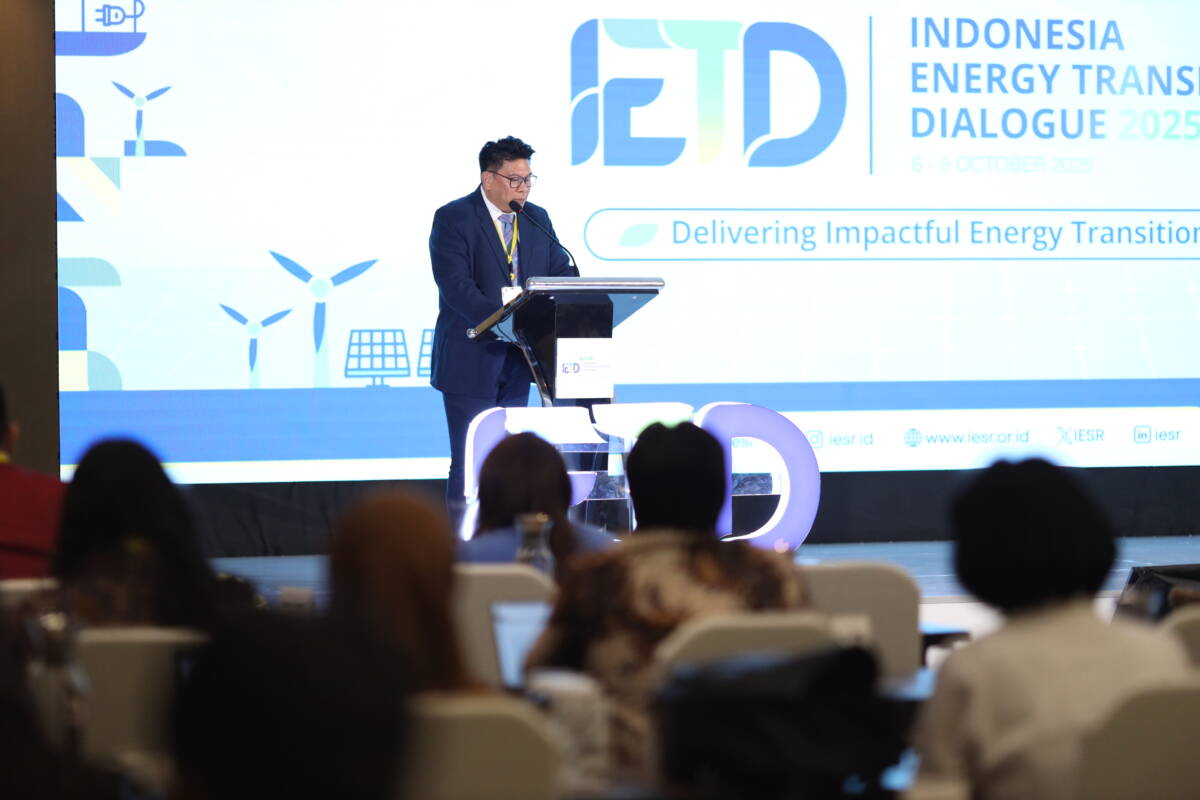Jakarta, October 29, 2025 – Indonesia has submitted its Second Nationally Determined Contribution (SNDC) document to the United Nations Framework Convention on Climate Change (UNFCCC) on Monday (27/10). The submission of the document took place after the Indonesian government, through the Ministry of Environment, held a public consultation on the SNDC on Thursday (23/10), and less than a month before the United Nations Climate Change Conference (Conference of the Parties, COP30).
Indonesia’s SNDC no longer uses the percentage of projected emission reductions based on a business-as-usual (BAU) scenario. Instead, it adopts an absolute target for greenhouse gas (GHG) emissions in 2035, using 2019 as the base year. The SNDC document outlines three scenarios for calculating GHG emissions. However, under two of the conditional target scenarios, Indonesia’s total emissions are projected to increase by 2030 compared to 2019 levels.
The conditional target, or Low Carbon Compatible with Paris (LCCP-H) scenario, aims for high economic growth of up to 8%. In this scenario, net emissions, after accounting for absorption from the forestry and other land use (FOLU) sector, are projected to reach 1,489 million tons of carbon dioxide equivalent (CO₂e) by 2035. Without considering absorption from the FOLU sector, total or gross emissions could rise to 1,696 million tons of CO₂e during the same period.
The Institute for Essential Services Reform (IESR) assesses that the 8% economic growth scenario remains highly carbon-intensive. The absorption target for FOLU sector in 2035 is significantly large (-207 million tons of CO₂e), effectively substituting for emission reduction efforts in the energy sector. Under this scenario, emissions are projected to continue rising and will only peak around 2035, before declining sharply toward 2060. This indicates that substantial emission reduction efforts will not begin until after 2035, missing the critical window for action this decade.
IESR considers this delay in peaking emissions inefficient and potentially more costly in the long term. It also carries a high risk of failing to meet the Paris Agreement targets unless supported by bold policy interventions, strong international cooperation, and favorable external conditions.
Referring to the 1.5°C benchmark set by the Climate Action Tracker (CAT), Indonesia’s absolute emissions target for 2035 should be around 720 million tons CO₂e (excluding the FOLU sector) in order to align with the Paris Agreement pathway. However, the target reflected in the SNDC document is no more ambitious than the absolute emissions target stated in the National Long-Term Development Plan (RPJPN) 2025–2045, which is 760 million tons of CO₂e by 2035 (including the FOLU sector). As the primary reference for Indonesia’s climate action, the SNDC should embody the highest possible level of ambition, in accordance with Article 4 of the Paris Agreement. Achieving alignment with the Paris trajectory will require substantial international technical and financial support.
Under the conditional scenario, assuming 8% economic growth, emissions from the energy sector are projected to be the largest contributor in 2035, reaching approximately 1,336 million tons of CO₂e, or a 103% increase compared to 2019 levels. Mitigation efforts in the energy sector will focus on increasing the renewable energy mix to 19–23% by 2030 and 36–40% by 2040, improving electricity efficiency, and accelerating the adoption of electric vehicles. Meanwhile, the peak emission year for the energy sector is projected to occur in 2038, indicating a delay from the estimate presented in the previous SNDC draft.
IESR views the SNDC as merely an update to emission measurement methodologies, without introducing any significant breakthroughs in mitigation efforts. The document continues to follow outdated patterns, such as relying on absorption from the forestry and other land use (FOLU) sector as the main mitigation strategy, delaying the peak of energy sector emissions, and setting relatively modest targets that are easier to achieve because they exceed current policy capacities.
Furthermore, the SNDC does not reflect President Prabowo’s ambition to achieve 100% renewable energy within 10 years, as stated in the 2026 fiscal and budget memorandum presented to the House of Representatives. It also overlooks the plan to develop 100 GW of solar power plants across villages, which could make a substantial contribution to emission reductions.
IESR Chief Executive Officer Fabby Tumiwa stated that the delay in achieving peak emissions could have been avoided if the government had not hesitated to implement the energy transition in line with President Prabowo’s vision.
“With a renewable energy potential of 3,800 GW and the declining investment costs of solar and wind power plants, as well as battery systems, greater utilization would significantly lower electricity production costs and reduce emissions. Solar power plants and Battery Energy Storage Systems (BESS) now generate electricity at more competitive prices than diesel, gas, or coal power plants. The continued decline in renewable energy prices supports the President’s energy transition vision. As renewable energy becomes increasingly cost-competitive, keeping old coal power plants, which should have already been retired, in operation will only cause Indonesia to miss out on the opportunity for cheaper electricity,” said Fabby.
He criticized the economic approach used in the NDC model, which assumes that ambitious climate action is incompatible with high economic growth.
“This contrasts with the findings of Indonesia’s Low Carbon Development Initiative (LCDI) modeling by Bappenas, which demonstrate that stronger climate action is actually a prerequisite for achieving high-quality economic growth. The energy transition requires investments of USD 40–50 billion per year, which, if realized, could drive sustainable and inclusive economic growth,” added Fabby.
Note to Editor:
The Second Nationally Determined Contribution (SNDC) includes three scenarios:
-
- Current Policy Scenario (CPOS): Represents the unconditional target.
- Low Carbon Compatible Pathway (LCCP) Scenarios: Represent conditional targets, consisting of two variants:
- Low economic growth: 6.0% in 2030 and 6.7% in 2035
- High economic growth: 7.0% in 2030 and 8.3% in 2035
Reference materials:
- Presentation materials from the SNDC public consultation (October 2025)
- SNDC Document (UNFCCC website)

